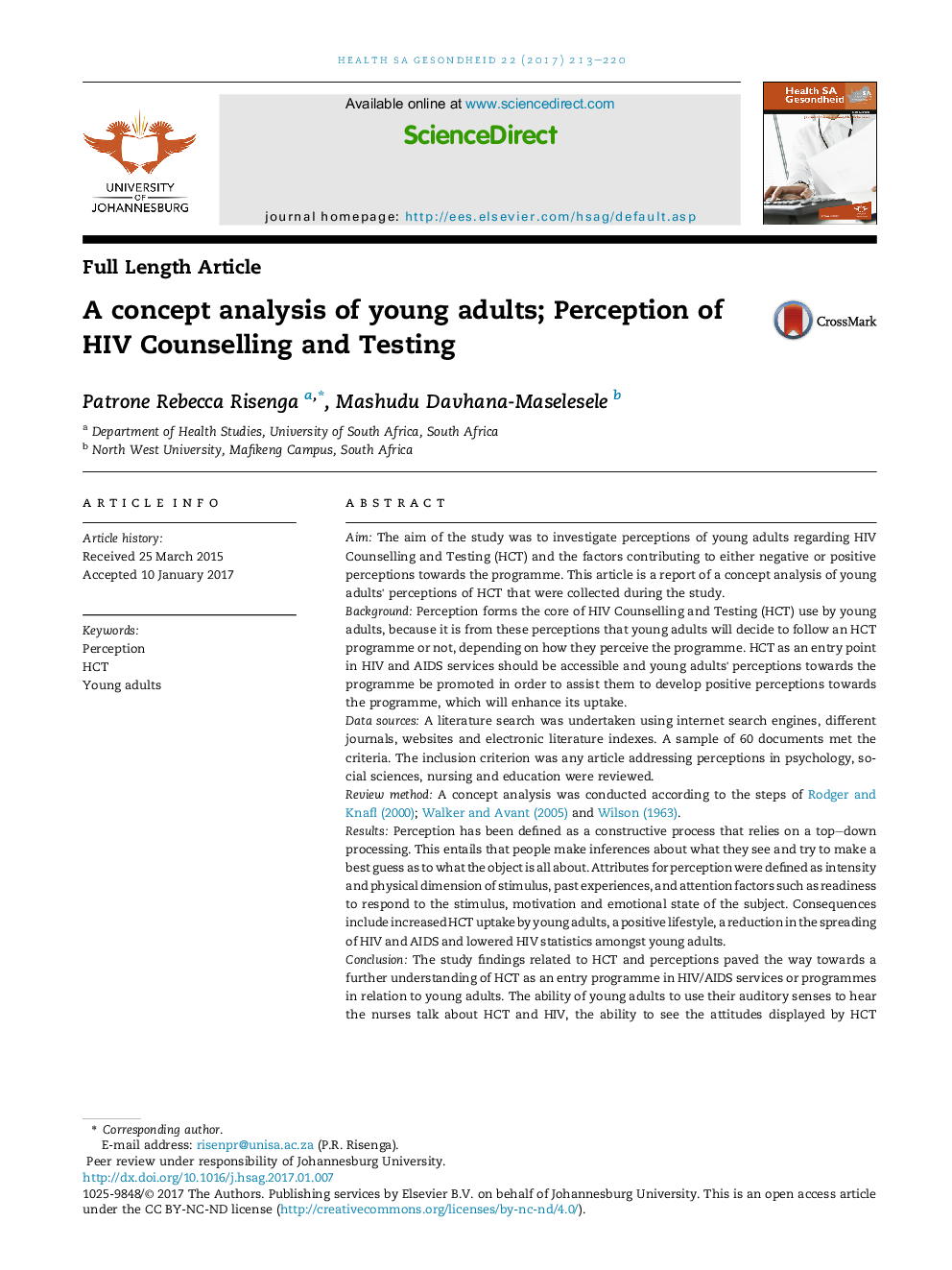| Article ID | Journal | Published Year | Pages | File Type |
|---|---|---|---|---|
| 5568036 | Health SA Gesondheid | 2017 | 8 Pages |
AimThe aim of the study was to investigate perceptions of young adults regarding HIV Counselling and Testing (HCT) and the factors contributing to either negative or positive perceptions towards the programme. This article is a report of a concept analysis of young adults' perceptions of HCT that were collected during the study.BackgroundPerception forms the core of HIV Counselling and Testing (HCT) use by young adults, because it is from these perceptions that young adults will decide to follow an HCT programme or not, depending on how they perceive the programme. HCT as an entry point in HIV and AIDS services should be accessible and young adults' perceptions towards the programme be promoted in order to assist them to develop positive perceptions towards the programme, which will enhance its uptake.Data sourcesA literature search was undertaken using internet search engines, different journals, websites and electronic literature indexes. A sample of 60 documents met the criteria. The inclusion criterion was any article addressing perceptions in psychology, social sciences, nursing and education were reviewed.Review methodA concept analysis was conducted according to the steps of Rodger and Knafl (2000); Walker and Avant (2005) and Wilson (1963).ResultsPerception has been defined as a constructive process that relies on a top-down processing. This entails that people make inferences about what they see and try to make a best guess as to what the object is all about. Attributes for perception were defined as intensity and physical dimension of stimulus, past experiences, and attention factors such as readiness to respond to the stimulus, motivation and emotional state of the subject. Consequences include increased HCT uptake by young adults, a positive lifestyle, a reduction in the spreading of HIV and AIDS and lowered HIV statistics amongst young adults.ConclusionThe study findings related to HCT and perceptions paved the way towards a further understanding of HCT as an entry programme in HIV/AIDS services or programmes in relation to young adults. The ability of young adults to use their auditory senses to hear the nurses talk about HCT and HIV, the ability to see the attitudes displayed by HCT counsellors, and their perceptions with regard to lack of privacy, together with a lack of treatment for HIV made young adults to perceive HCT programme as being of less importance to them.
